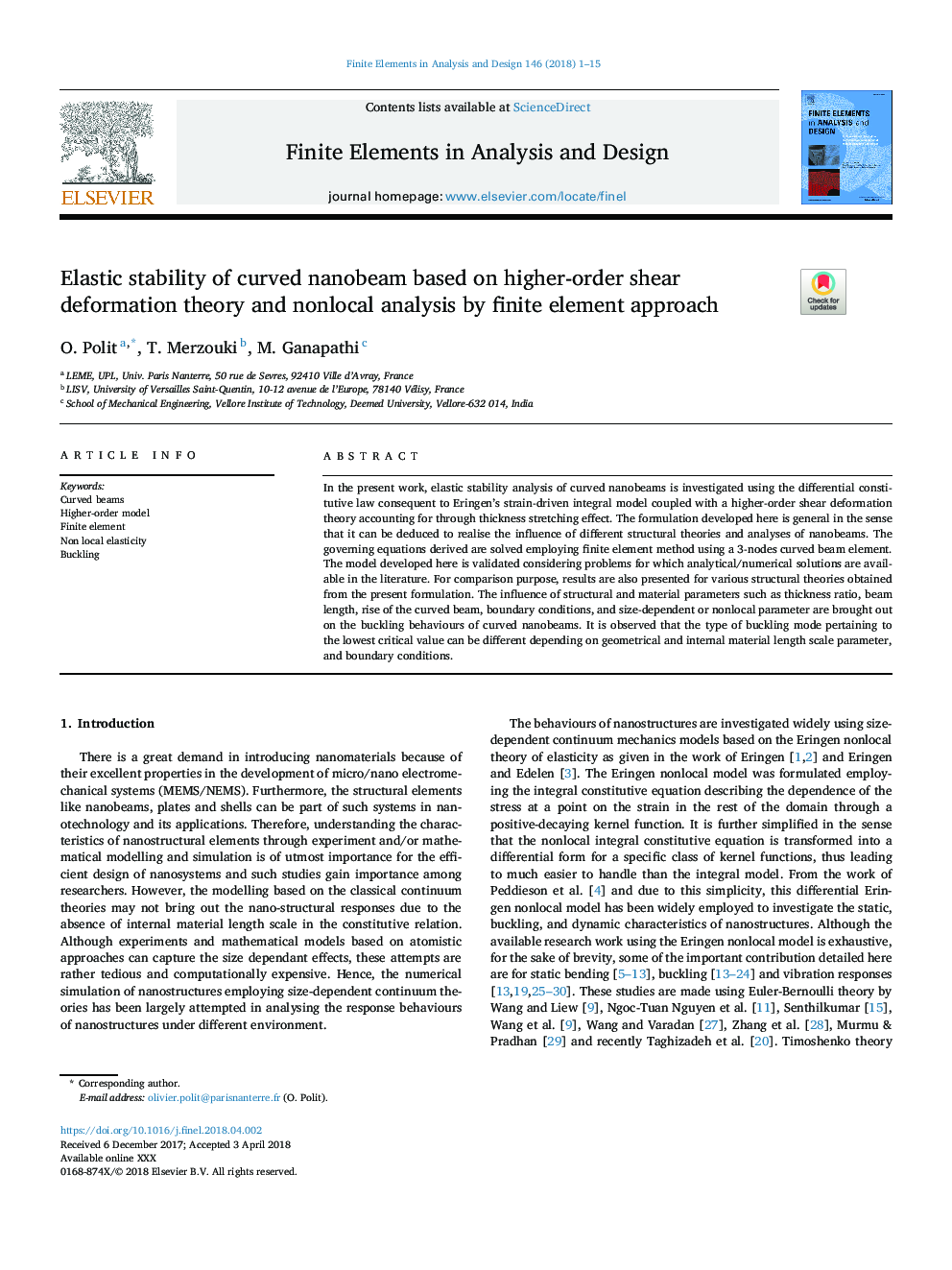| Article ID | Journal | Published Year | Pages | File Type |
|---|---|---|---|---|
| 6925275 | Finite Elements in Analysis and Design | 2018 | 15 Pages |
Abstract
In the present work, elastic stability analysis of curved nanobeams is investigated using the differential constitutive law consequent to Eringen's strain-driven integral model coupled with a higher-order shear deformation theory accounting for through thickness stretching effect. The formulation developed here is general in the sense that it can be deduced to realise the influence of different structural theories and analyses of nanobeams. The governing equations derived are solved employing finite element method using a 3-nodes curved beam element. The model developed here is validated considering problems for which analytical/numerical solutions are available in the literature. For comparison purpose, results are also presented for various structural theories obtained from the present formulation. The influence of structural and material parameters such as thickness ratio, beam length, rise of the curved beam, boundary conditions, and size-dependent or nonlocal parameter are brought out on the buckling behaviours of curved nanobeams. It is observed that the type of buckling mode pertaining to the lowest critical value can be different depending on geometrical and internal material length scale parameter, and boundary conditions.
Related Topics
Physical Sciences and Engineering
Computer Science
Computer Science Applications
Authors
O. Polit, T. Merzouki, M. Ganapathi,
